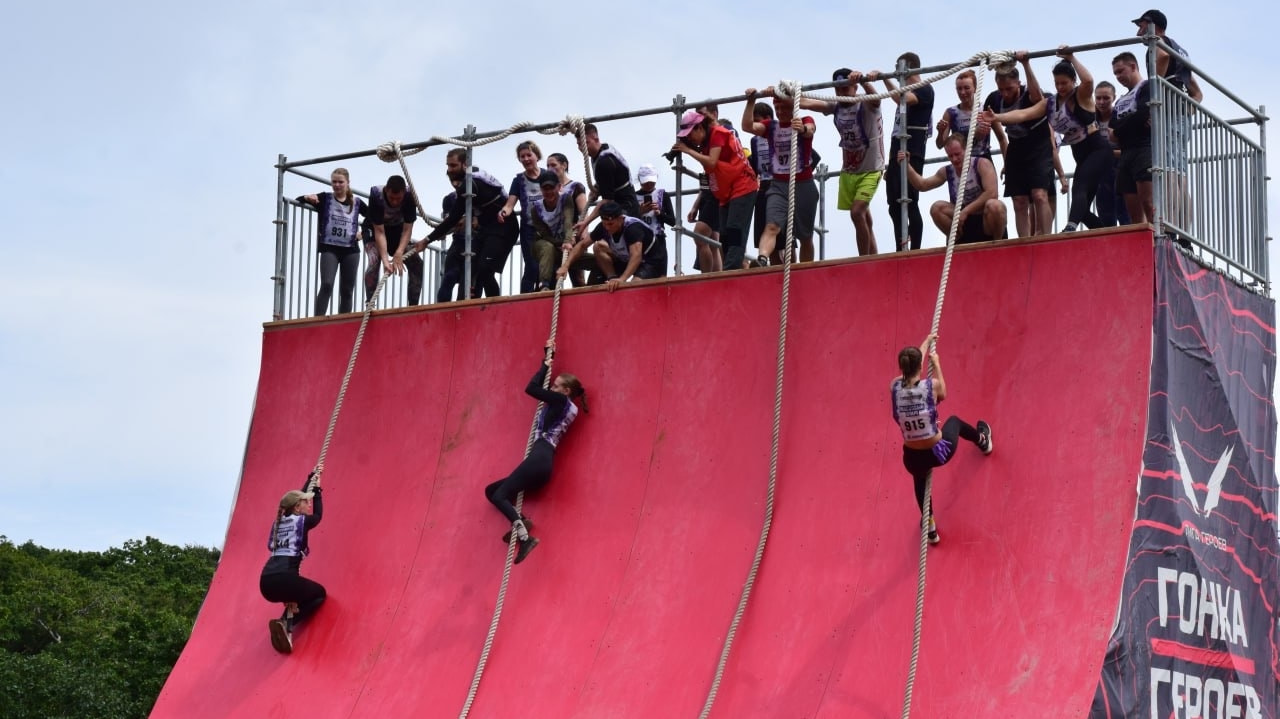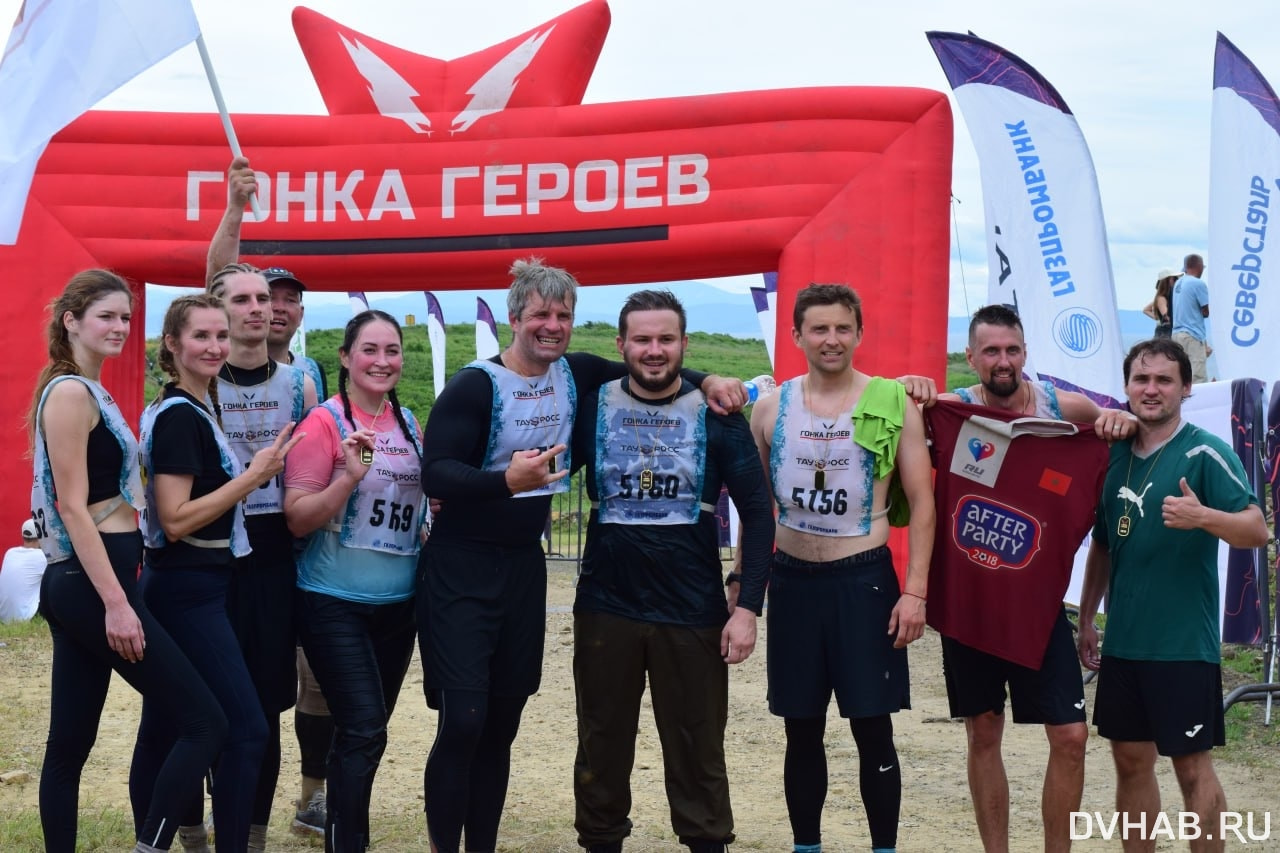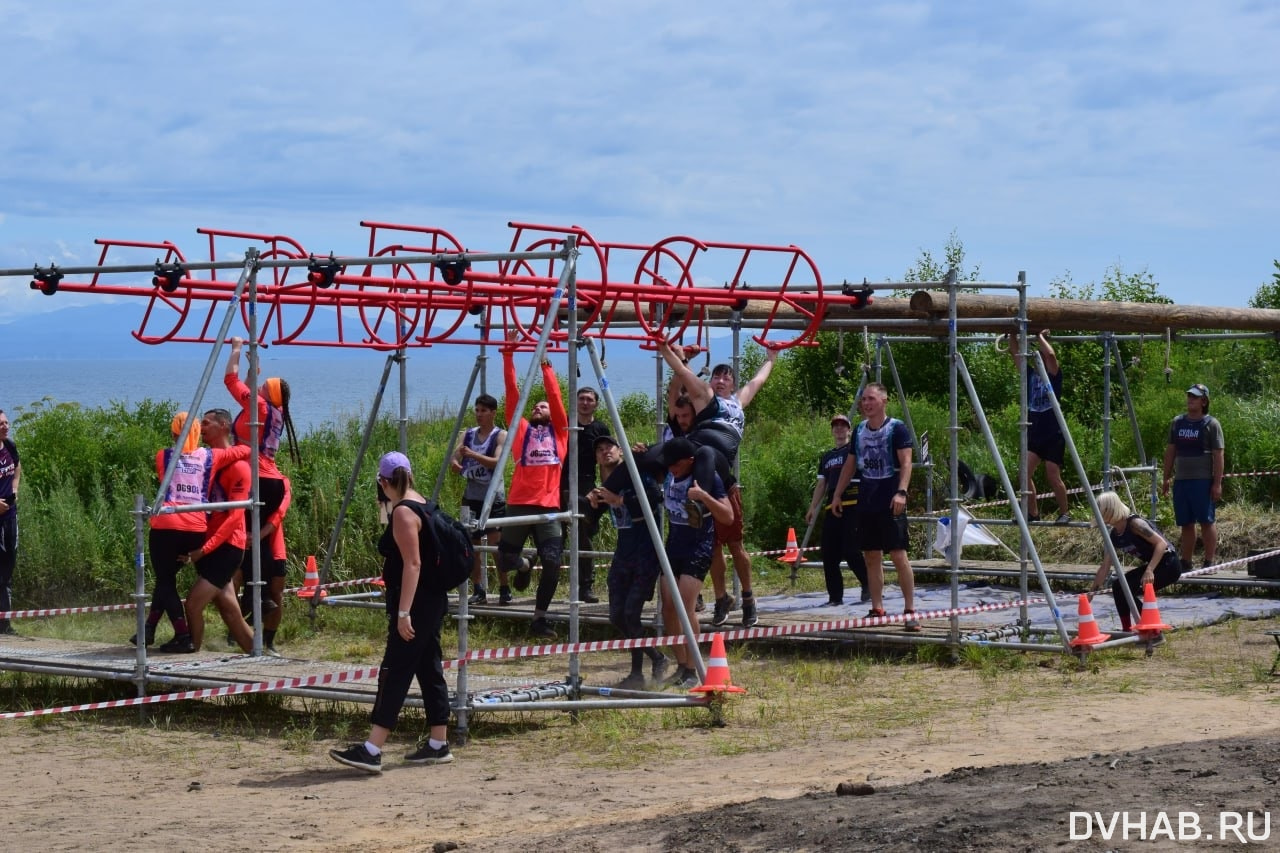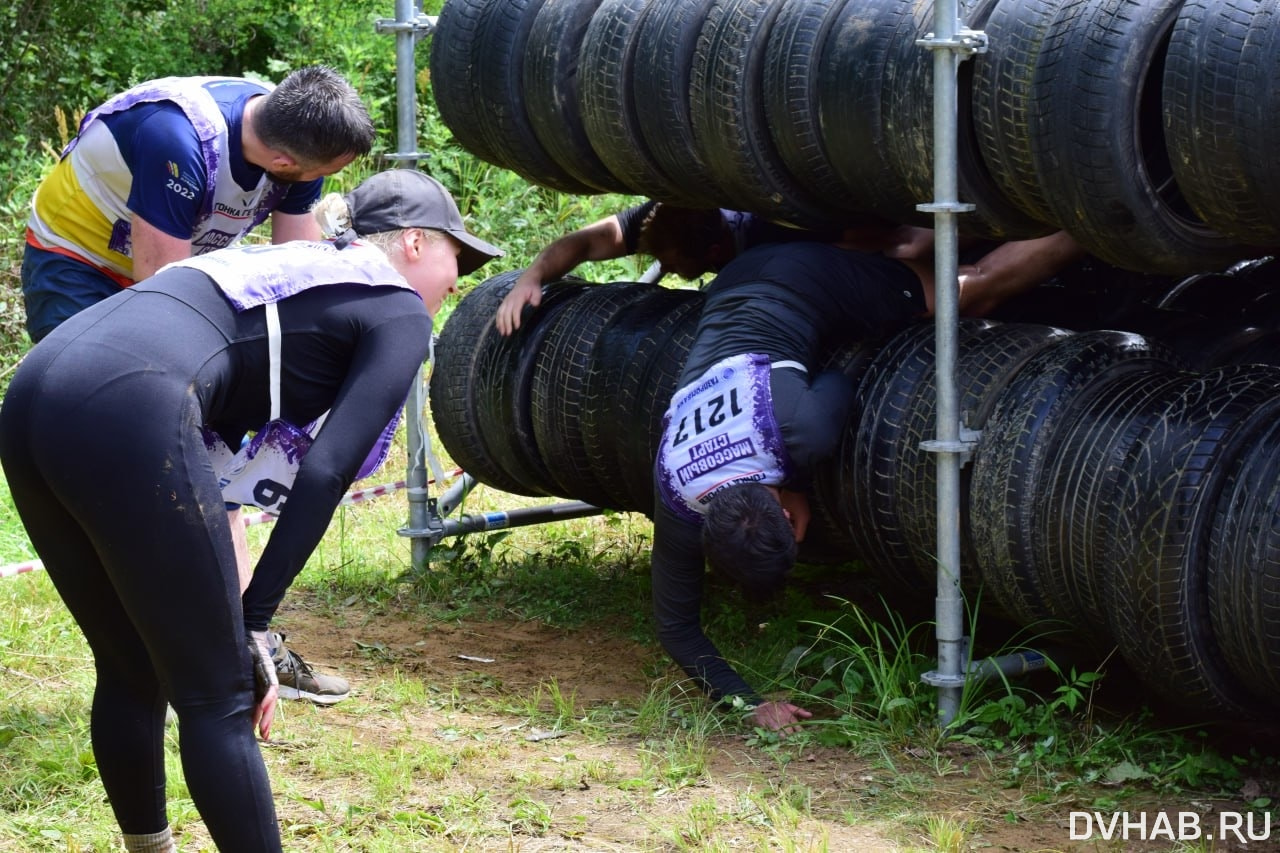
The obstacle race took place at the Gornostay training ground in Vladivostok last weekend. This year, the extreme run gathered around 2,500 participants from Vladivostok, regional centers of Primorye, Birobidzhan, Blagoveshchensk, Yuzhno-Sakhalinsk, St. Petersburg, Moscow, and many other regions. People came to overcome their fears and test their strength and endurance.
“We represent a group of companies, including ‘Geoprominvest’ and the football academy ‘Iskra.’ We gathered the most motivated people who wanted to challenge themselves. The selection principle was: if you didn’t hide, you’re not to blame. But in reality, everyone volunteered. Many of us participated for the first time, while others had done the race before. The most important thing is having a good team. Such camaraderie is the key to success,” said participants from Khabarovsk.

The first to start were participants in the national competitions, followed by age-group championships, mass starts, corporate teams, and everyone else. This time, the obstacle course included beam and log crossings, carrying sacks and tires, monkey bars, fences and barriers, a water crossing, ropes, and, at the very end, the climb up ‘Everest.’ In total, the 6-kilometer track featured over 20 obstacles.
“The track has 23 obstacles. These include monkey bars (classic, swing figures, rotating hexagons, etc.), water barriers, carrying various loads, climbing inclined and vertical surfaces with or without ropes. The toughest elements are the rotating hexagons, rotating half-rings, and ‘Cowboy.’ The final obstacle is ‘Everest,’ a wall about 9-10 meters high,” explained the chief referee of the ‘Race of Heroes.’

A large group of supporters also gathered at the training ground. Everyone came to cheer for their ‘hero’ and simply enjoy the spectacle. Organizers provided transportation, a rest area, showers, changing rooms, a field kitchen, photo zones, outdoor games, and other entertainment for participants and spectators. Those who reached the finish line and received a token could opt to have it engraved. As participants admitted, the race was an opportunity to test themselves and their physical fitness. It turned out that regular sports training doesn’t always guarantee success.
“A year ago, I started preparing for my first ‘Race of Heroes.’ I admit, without long training, it’s hard to complete a track with 23 challenges, most of which involve monkey bars. I even got minor injuries in some places, probably because I ran solo in the ‘mass race’ format, where you’re on your own. Those who ran in teams, in ‘platoons,’ had it easier thanks to team support, which I lacked. The team helped participants overcome obstacles much faster and more cheerfully. Next year, I want to prepare better and gather a team,” shared a participant from Khabarovsk.

However, experienced participants who had attended the race before noted that this time, they ‘lacked madness.’ In previous years, there were more water-filled trenches, and the track itself was longer. There were even tanks to crawl under, all accompanied by the roar of gunfire and smoke grenades. However, organizers decided to forgo overly extreme challenges for safety reasons. Most participants are not athletes but office workers who rarely run through mountains jumping over obstacles.
The ‘Race of Heroes’ competitions have been held in Russian regions since 2013. The first race was organized at a military training ground in the Moscow region. Since then, the geography of the ‘Race of Heroes’ has expanded significantly, with events taking place across Russia and beyond. Such races were also held in Khabarovsk before, the last time in 2018.
